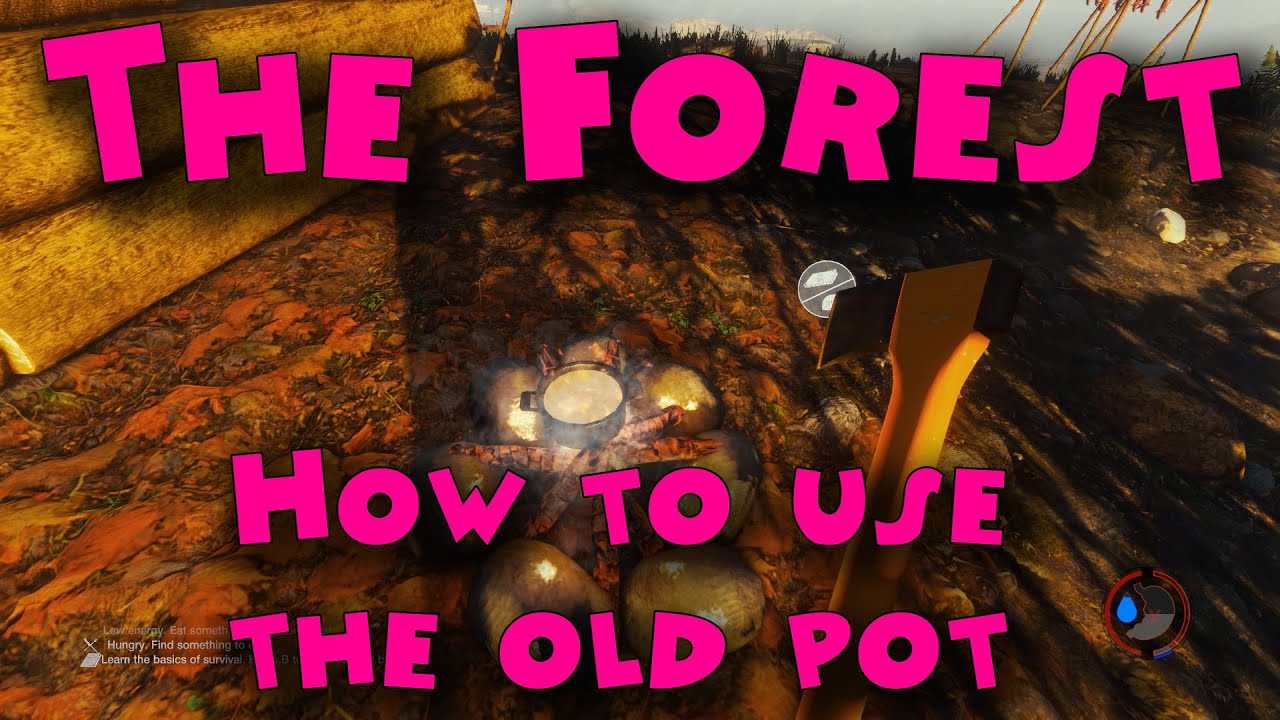Most people go to the forest to get away from the hustle and bustle of everyday life. But even in the middle of nature, there are still some things you need to do in order to have a successful trip. One of those things is making sure you have enough water.
Here are a few tips on how to fill your pot with water while you’re in the forest.
- Find a water source
- This could be a river, lake, or stream
- Place your pot next to the water source
- Scoop up water with your pot until it is full
- Bring the pot of water back to your campsite

Credit: www.corrosionhour.com
What is the Best Way to Fill a Pot With Water in the Forest
When you’re out in the forest, there are a few things to keep in mind when it comes to finding and using water. One of the most important is how to fill your pot with water. Here are a few tips on the best way to do just that:
1. Look for moving water: This is generally the safest option as stagnant water can often be home to harmful bacteria. If you can find a stream or river, take advantage of it.
2. Use a filter: If you’re unsure about the quality of the water, use a simple filter like a coffee filter or even a bandana to strain out any impurities before filling up your pot.
3. Boil it: Even if you’ve filtered your water, boiling it for at least 1 minute will help kill any remaining bacteria and make it safe to drink.
With these tips in mind, filling up your pot with water in the forest should be no problem! Just remember to take care when choosing your source and always boil before drinking if possible.
Where Can I Find Water in the Forest
Assuming you are lost in the forest and need water to drink:
One of the most important things to remember whenlost in the woods is that, although water is everywhere, itisn’t always safe to drink. The first step in findingwater is determining if a water source is potable—thatis, if it’s clean enough to drink without making yousick.
In general, moving water is safer to drinkthan still water. That’s because stagnant water can becontaminated with all sorts of harmful bacteria andparasites. So, if you’re going to drink from a streamor river, try to find a spot where the water is movingpretty quickly.
Another way to determine if a watersource is safe is by looking at its color. Clear watersources are usually okay to drink, but stay away fromanything that looks murky or has sediment in it. Ifyou’re really unsure about a particular body ofwater, your best bet is to boil it before drinkingto kill any potential contaminants.
Of course, boiledwater isn’t much good if you don’t have anything toturn on the stove with. In that case, you can tryfiltration as another way to make sure your watersafe. There are commercial filters available forthis purpose, but you can also improvise one usinga coffee filter and some gravel or sand from thestreambed.
Simply set up your makeshift filter byresting the coffee filter on top of an empty bottleand filling the bowl-shaped part of the filter witheven layers of gravel and sand until it’s aboutthree-quarters full—just be sure not leave any biggaps that could allow unfiltered water through.
How Do I Purify Water in the Forest
If you find yourself in the forest without any clean water, there are a few ways that you can purify it so that it is safe to drink. Boiling is the most effective way to purify water, and all you need is a heat source and something to boil the water in. If you don’t have access to boiling, you can also purify water with bleach or iodine tablets.
Both of these methods will make the water taste bad, so it’s best to only use them as a last resort. To purify with bleach, add 8 drops (1/8 teaspoon) of regular household bleach per gallon of water. stir well and let sit for 30 minutes before using.
To purify with iodine tablets, follow the instructions on the package.
Conclusion
This post is about how to fill a pot with water while you’re in the forest. First, find a clean source of water, like a stream or river. If you can’t find one of those, then look for a pond or lake.
Once you’ve found a source of water, gather some leaves and branches to use as a filter. Place the leaves and branches over the top of your pot and pour the water through them. This will help to remove any dirt or debris from the water.
Finally, boil the water for at least five minutes before drinking it to kill any bacteria that may be present.
- Test Post 2022-12-09 - February 14, 2024
- How to Run in Pokemmo - February 13, 2024
- How Much is My Lol Account - February 13, 2024

